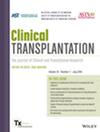Utilizing Machine Learning to Predict Liver Allograft Fibrosis by Leveraging Clinical and Imaging Data
Abstract
Background and Aim
Liver transplant (LT) recipients may succumb to graft-related pathologies, contributing to graft fibrosis (GF). Current methods to diagnose GF are limited, ranging from procedural-related complications to low accuracy. With recent advances in machine learning (ML), we aimed to develop a noninvasive tool using demographic, clinical, laboratory, and B-mode ultrasound (US) features to predict significant fibrosis (METAVIR≥F2).
Methods
We used a nested 10-fold cross-validation approach with grid-search for hyperparameter fine-tuning to train an artificial neural network (ANN) and a support vector machine (SVM) to classify mild fibrosis (F0-F1) and significant fibrosis (F2-F4) on 1131 patients. We calculated Shapley values to identify top-ranked features, determining the contribution of each feature to model predictions. For the imaging-based model, we used 4819 images with 892 studies trained on the residual network 18 (ResNet18) model to classify F0-F1 versus F3-F4.
Results
We determined the ANN performed the best when compared to the SVM and standard biomarkers, with an AUC ranging from 0.77 to 0.81. The ResNet18 model was unable to diagnose advanced GF, leading to the training AUCs ranging from 0.89 to 0.97, while the validation and testing AUCs were 0.43–0.63. Shapley analysis highlighted the following top-ranked features associated with significant GF: hepatitis C at transplant, recipient age, recipient sex, and certain blood markers such as creatinine and hemoglobin.
Conclusion
Noninvasive approaches using ML for predicting significant GF perform well when considering demographic, clinical, and laboratory data; however, this performance is not enhanced with the use of US images.


 求助内容:
求助内容: 应助结果提醒方式:
应助结果提醒方式:


